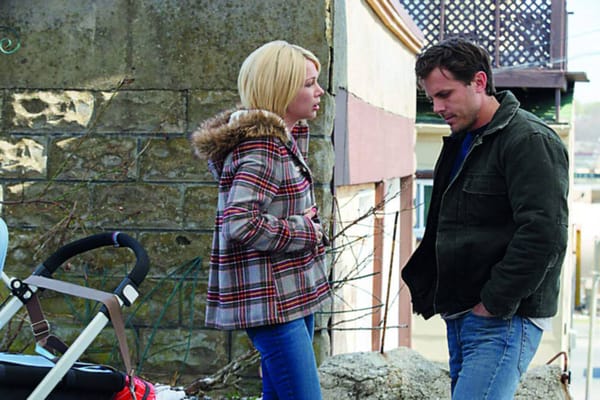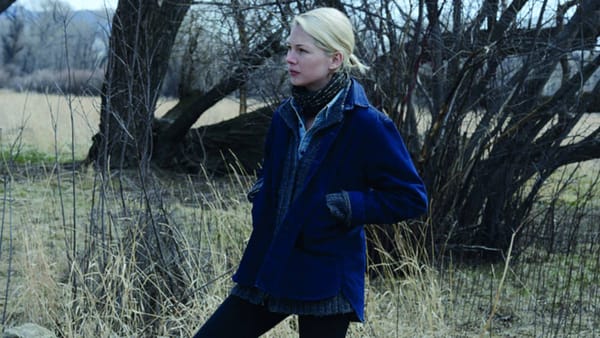LFF: La La Land
The highly aticipated modern day musical which draws inspiration from the old classics is as amazing as the hype has made it out to be.

It turns out Ryan Gosling is as roguishly charming and wonderful in person as we all hoped he would be. I was lucky enough to see La La Land for the first time at a London Film Festival screening, after which he appeared to a hurricane of cheers and thrown roses/knickers for a Q&A. When asked about the challenges he had faced singing and dancing for the film, he cracked that the real challenge was having his director Damien Chazelle constantly walking around the set in baggy old-timey gangster trousers, clown shoes, and an oversized monocle that he insisted on wearing. What. A. Dreamboat.
AAAAAAAAAAAAAA At the same Q&A, Chazelle (who also wrote the film) recounted the time he mentioned to his producer – before beginning the process of making his 2014 feature Whiplash – that he had always had the dream of filming a love letter to the golden years of Hollywood in the form of an original romantic musical. It’s not hard to believe that a vivid expression of alarm came over the producer’s face, or that the reply Chazelle received was “that’s just about every taboo word you can say to a producer”; you can tell when you watch La La Land that it’s a miracle you’re watching it at all. With lengthily played-out fantasy sequences, a tap dance number, and several extended analyses of the joys of jazz, for Christ’s sake, releasing a movie like this in 2016 certainly must have taken some guts – or, rather more likely, a hell of a lot of heart.
It tells the story of Mia (Emma Stone), Sebastian (Gosling) and – well, actually, nobody else. Minor players from the two Los Angeles-based dreamers’ separate lives may flicker into appearance for a brief spell, but La La Land is very much The Stone & Gosling Show. Thank god then, that what we have here is a pair of the best performances either of these actors have ever given, and that their chemistry has never been stronger than it is in this film – it appears their crushingly lifeless work in 2013’s Gangster Squad was only a fluke. When they are working in tandem, whether in conversation, song, or movement, they click so tightly that you wonder if you’re watching two real humans or two beautiful clockwork contraptions. They’re strikingly reminiscent of some of the great old-time silver screen couples like Ginger Rogers & Fred Astaire. And yet they excel individually too: Ryan Gosling brings every Ryan Gosling-ism in the book to his performance, and yet you always believe that the man you are watching is indeed jazz enthusiast Seb Wilder (not least thanks to a strong grasp of jazz piano stylings and a startling baritone-bass singing voice, both of which he appears to have pulled out of thin air). But of the two stars, Stone shines the brightest. As we watch her struggle through failed audition after failed audition, and make coffee after coffee just to get by, her every action, every facial expression, every note carried by her beautiful earnest voice is an utter charm to behold, and she is deserving of every award that will undoubtedly be flung her way this year.
While Stone and Gosling prove proficient as musical theatre performers, their strength as actors is what is relied on most in La La Land. This feels very much intentional. One of the strongest aspects of this film is that director Chazelle understands what made classic Hollywood musicals so great; not an endless barraged of forced show-tunes (there are only 7 pieces that are sung by the cast in the film, and one of them is a reprise), but perfectly-timed transitions into that heightened version of reality that only a musical can conjure, signifying those moments in which, as Chazelle put it, “everything just comes together”. These are moments like a playfully flirty conversation on a hilltop overlooking Hollywood that becomes a tap-danced duet, a poignant reflection on a new-found love set to the beautiful yet tantalisingly short tune City of Stars (perhaps the film’s best number), and the same tune’s reprise which is reworked into a duet capturing Mia and Seb’s relationship at its most serene and intimate. The other great positive of this technique is that in moments when a song is not necessary, it does not appear; some of the story’s most crucial points take place in a spoken scene, not in song, but are certainly no less powerful for it. There is a scene in which a quiet dinner descends into an argument which, as well as being a frontrunner for the film’s best moment, is in all honesty one of the best-written and best-acted scenes I have ever watched in a musical, onstage or onscreen; Chazelle proves that he has not let his razor-sharp skill for dialogue that he displayed in Whiplash be blunted by the grander aims of this project.
The immense, upbeat dance number that opens the film is something of a fake-out; while I suppose it’s very much necessary to prepare the audience for the fact that what they’re about to watch is a musical, the film that follows is so much more layered and intelligent than you expect following such a full-throttled show-tune (the song’s lyrics perfectly fit the themes of the film, but we only learn that after we have seen it play out). La La Land is not just for lovers of musicals, but for lovers of movies. It tackles with elegance, eloquence, and bold honesty the act of chasing a dream, whether that dream be acting or opening a jazz club, and the sacrifices that must be made to achieve it. After watching it, I left the theatre both heartbroken and blissfully happy. Chazelle reportedly says that it took six years of people saying “no” to him to get La La Land into production. Seeing the completed version of his film, the fruit of his perseverance, must have been worth every second of the wait.









